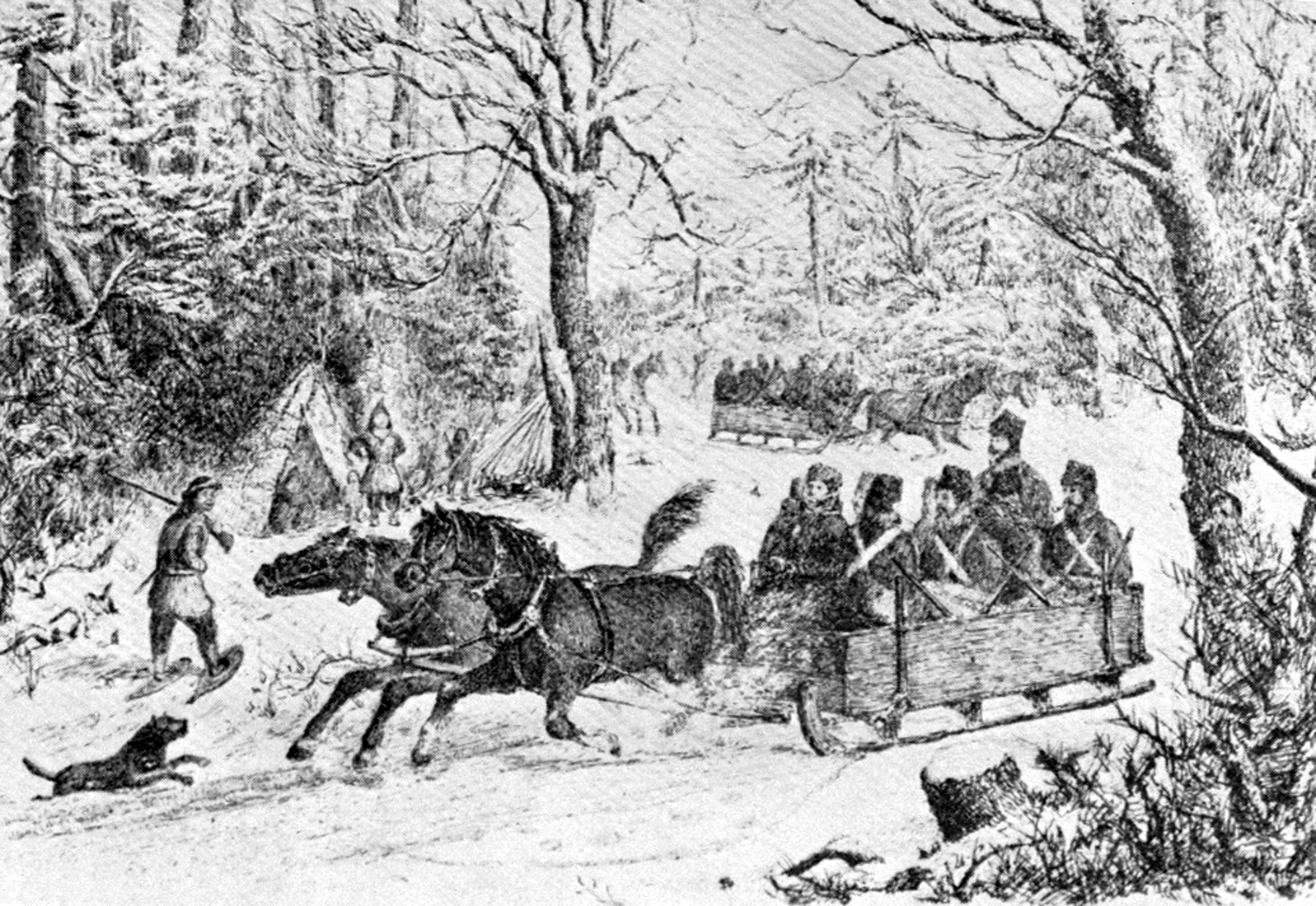
A portage is a path alongside a river or between bodies of water taken to avoid obstacles. Portagers must carry their canoes and baggage.
Aboriginal peoples portaged across the area linking present-day Notre-Dame-du-Portage with the Atlantic coast. The French and then the British also travelled here, widening the path. Eventually, they made it into a carriage road, which was practical even without halting posts.
To gain easy access to the Maritimes by land, travellers had to wait for until 1876 for the Intercolonial Railway to link Rivière-du-Loup and Halifax. From this moment onward, tourists could begin their trip in the Great Lakes, visit the St. Lawrence Estuary (as far as Métis) and continue on by train to Baie-des-Chaleurs, the Bay of Fundy and the Atlantic coast of Nova Scotia.

